Forklift
Guide
The Hiremech guide to choosing a forklift
Forklifts come in many shapes and sizes and are designed for differing applications. For example, what type of forklift is best for indoor and outdoor use? We know it can be difficult to choose, so we created a brief guide to give you the basics on each type of forklift truck and their uses. We hope you find this guide useful and that it helps you make the right decision for you and your application.
020 8880 3322
Not sure what forklift you need?
Feel free to get in touch with a member of our team if you have any questions about the options. We have over twenty years’ experience working with forklift trucks and are therefore the best people to provide you with personalised advice.
We will discuss your needs and requirements, as well as your budget, to make sure that you choose the right forklift truck for your business operations.
Forklifts for indoor use
Electric forklift trucks are the best choice of machinery for indoor use in warehouses and other buildings where items must be lifted and transported. Electric forklifts are powered by battery and usually last one standard shift before needing to be re-charged.
One of the main benefits of electric forklifts is that they do not generate any emissions. They are also very quiet, unlike other forklift trucks.
Although electric forklifts are expensive to buy, they are the cheapest type of forklift truck to operate, as you do not have to pay expensive fuel costs.
Indoor forklifts also take on other guises. Pallet trucks and reach trucks are really commonly used in warehouses around the world, and could be what you’re looking for.
Forklifts for outdoor use
There are two different types of engine for outdoor forklifts.
Gas forklifts
We have a fleet of gas forklift trucks suitable for outdoor use. These trucks run on natural gas, which can be purchased in canisters, similar to a gas cooker. One of the main advantages of gas powered forklifts is that they are easy and quick to refuel. A drawback is that although gas forklifts are low cost to purchase, the fuel is fairly pricy and also requires proper storage.
Gas forklift trucks are designed for using on rugged and rough terrain. They can lift large loads (up to 10,000 kilos) and can also be used for pushing or towing. One of the great things about gas powered forklifts is that they can also be used indoors for short periods of time (making them multi-functional). The indoor area must be well-ventilated to prevent the fumes from harming your staff.
Diesel forklifts
Alternatively you could opt for one of our diesel forklifts. Like with gas forklifts, diesel forklifts are very easy and quick to refuel. Diesel forklifts are low cost to purchase (compared to electric forklifts) but they are more expensive to run, as you have to account for the cost of diesel fuel.
Unlike gas or electric forklifts, diesel machines are not commonly chosen for extended use indoors due to their emissions. They are more usually selected for applications involving regular use outdoors. These machines are solely designed for outdoor use and can handle the trickiest of terrain. We have a number of diesel-powered forklifts in our fleet, with some capable of handling heavy loads up to 15,000 kilos. They can also be used for pushing and towing.
Other factors to consider
As well as considering where you will be using your forklift truck, you also need to factor in the weight of the items you need the forklift to lift.
Our fleet is made up of a wide range of forklift trucks, each of which vary in the weight they can lift, as well as lift height. When making your decision, be sure to factor in the weight of the heaviest items you need to lift as well as the maximum height they are stored at.
Something you also need to consider is the entry and exit points of your building. If your forklift needs to be able to move from one room to another or from indoors to outside, you need to make sure that it is small enough to fit through your entries and exits.
If you want more information just call our knowledgeable and friendly staff today on 020 8880 3322
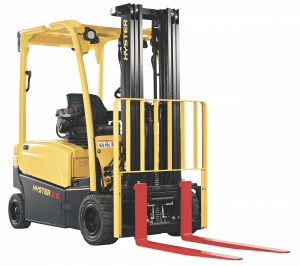
Counterbalance electric forklifts
A battery similar to the one in your car powers an electric forklift, although obviously bigger and stronger! The batteries are usually designed to last for at least one standard shift before needing a recharge, and the recharge station must be in a dry, well-ventilated area. Electric forklifts are ideal for indoor use, as they do not generate emissions, but cannot be used outside, except on smooth paved parking lot-type areas.
Electric forklifts are inexpensive to run, as there are no fuel costs involved, but they cost more initially. Electric forklifts are quiet, another plus for indoor use, and do not need storage areas for gas or diesel fuel.
Pros for the counterbalance electric forklift
- No emissions
- Quiet
- No fuel costs
- Replaceable, rechargeable batteries
- No storage required for gas fuel
- Low cost per hour of operation
Cons for the counterbalance electric forklift
- Not for outdoor use
- Needs a smooth, flat surface
- More expensive to acquire
- Battery charge area required
- Batteries need 8 hours to charge
- 8 hours to cool before use
- Time-consuming to change battery
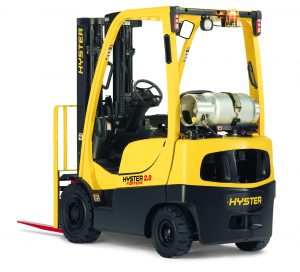
Counterbalance gas forklifts
Gas forklifts run on natural gas. They can be refueled quickly and easily, but they require storage for the fuel, and as with diesel, the fuel can become expensive. Gas forklifts use canisters of fuel, similar to a gas cooker, but much larger of course, which are switched out to refuel, and then the empty ones are refilled. Therefore, even though gas forklifts are less expensive to purchase initially, the cost of fuel quickly adds up, making them more expensive per use than electric.
Gas powered forklifts are ideally suited to outdoor use, but they can also be used indoors in well-ventilated areas for short periods, as the emissions they produce are dangerous if inhaled in an enclosed area. These trucks can generally handle rugged or rough terrain and handle larger loads, some up to 10,000 kilos, and can be used for minor pushing or towing as well.
Pros for the counterbalance gas forklift
- Outdoor use
- On the cheap end to acquire
- 5-15 minutes to refuel
- Good on rough terrain
- High load capacity
Cons for the counterbalance gas forklift
- Emissions
- High fuel costs
- Storage for fuel
- Higher operating cost
- Not for continuous indoor use
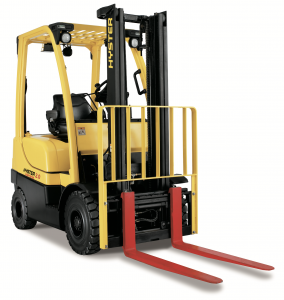
Counterbalance diesel forklifts
Diesel forklifts run on diesel fuel. These trucks have an internal fuel tank like a regular car, and can be refueled quickly and easily, but they require storage for the fuel, and the fuel can become expensive. Diesel forklifts are less expensive to purchase initially, but the cost of fuel quickly adds up, making them the most expensive per use when compared to an electric forklift.
Diesel-powered forklifts must be used outdoors, as the emissions they produce are dangerous if inhaled in an enclosed area. These forklifts are made for outdoor use and many can handle rugged or rough terrain. Diesel forklifts can handle the largest loads, some up to 15,000 kilos, and can be also be used for pushing or towing.
Pros for the counterbalance diesel forklift
- Outdoor use
- Less expensive to acquire
- 5 Minutes to refuel
- Good on rough terrain
- Highest load capacity
- Towing & pushing capability
Cons for the counterbalance diesel forklift
- Emissions
- High fuel costs
- Storage for fuel
- Higher operating cost
- Not for use indoor
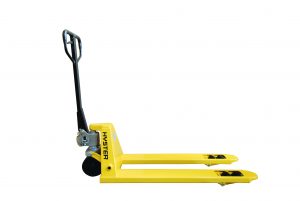
Pallet trucks
Pallet trucks are small forklifts used to move pallets around, which only raise the load enough to clear the ground so that they can be moved around.
Millions of pallet trucks are sold around the world every year and they are used in pretty much every application from corner shops to supermarkets to ports and terminals.
When buying a pallet truck a 12-month warranty is advisable and the health and safety of the operator is crucial. Make sure that you and your employees are trained and take the necessary precautions when loading and unloading.
Look after your pallet truck, get it maintained regularly and it will last you for years.
Pros for pallet trucks
- Inexpensive to acquire
- No emissions
- Very easy to operate
Cons for pallet trucks
- Low lift height
- Specific to certain pallet types
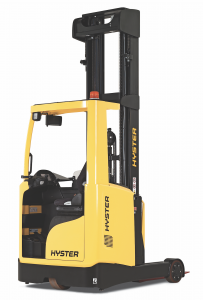
Reach trucks
Reach trucks contribute to the best warehouse space utilisation throughout. Versatile and manoeuverable, these trucks are perfect for putting away or retrieving pallets at height and in narrow aisles.
Reach trucks have the ability to stack loads of up to 12 metres high and are electric-powered for explicit indoor use.
These trucks are used widely in warehouses across the world and form an essential part of the material handling process.
Pros for reach trucks
- Low running costs
- No emmissions
- Good in narrow aisles
- Can lift up to 12 metres
Cons for reach trucks
- Expensive to acquire
- Indoor use only
- Requires an 8-hour charging time

Electric and utility vehicles
Electric vehicles come in many different shapes and sizes for a host of applications. Whether it be carrying out deliveries in town, moving goods around a warehouse or site maintenance, it’s making more and more sense to go electric.
We offer the full range of Polaris Work & Transport vehicles, covering the spectrum from road-based applications with the Goupil G5 and G3, all the way down to industrial/agricultural applications with the G1, Aixam and Gem ranges.
We also offer the Brutus range for serous off-road utility capability and true versatility.
Pros for electric vehicles
- Free Congestion Zone entry worth up to £2,600 per year
- Immediate carbon reduction of up to 5 tons per year
- Quiet running
- Easy charging
- Multi-function vehicles
- Reduced running & maintenance costs
Cons for electric vehicles
- Limited range on electric-only models
- Overnight charging regime or 8-hours from flat
- Unable to use on a motorway
- Limited public road towing of 285kg
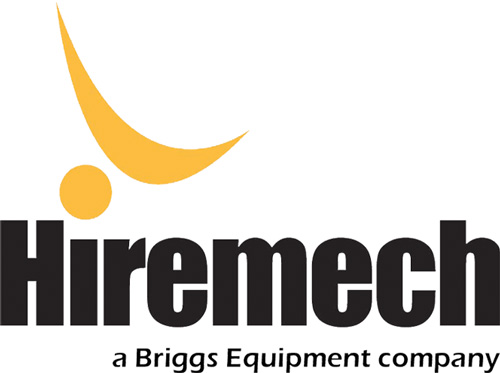
 020 8880 3322
020 8880 3322